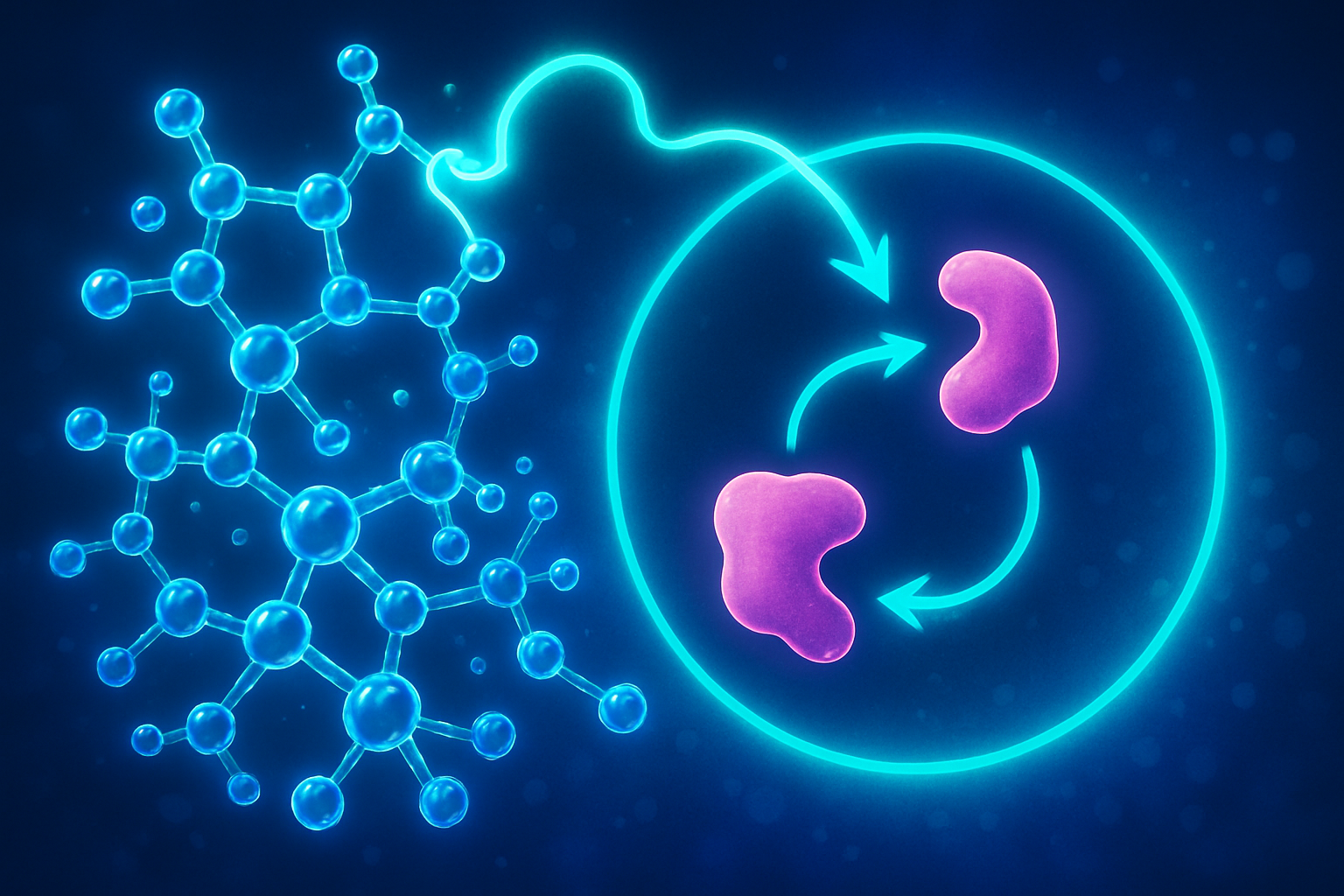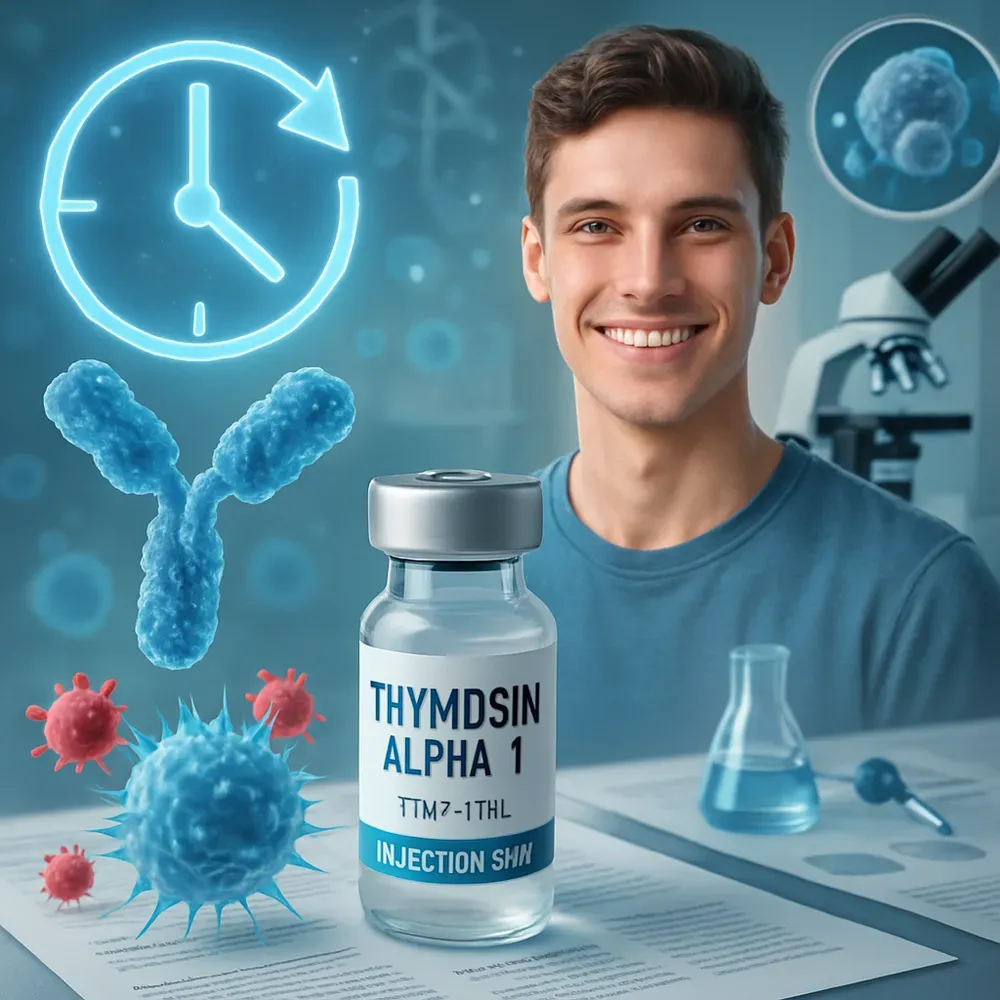Peptide Calculator: The Ultimate Guide for Accurate Dosing
This is a subtitle for your new post

Getting your peptide dosage right isn't just important—it's essential. Whether you're new to peptide therapy or you've been reconstituting vials for months, the math can trip you up. One miscalculation and you're either wasting expensive compounds or, worse, administering incorrect doses.
A peptide calculator takes the guesswork out of dosing. These tools help you determine exactly how much bacteriostatic water to add to your vial and how many units to draw for each injection. But not all calculators work the same way, and understanding the science behind the numbers makes all the difference.
This guide walks you through everything you need to know about peptide calculators—from basic reconstitution math to advanced dosing strategies. You'll learn how to use these tools confidently, avoid common mistakes, and optimize your peptide therapy for better results.
Why Accurate Peptide Dosing Matters
Peptides are powerful compounds, but their effectiveness depends entirely on proper dosing. Too little and you won't see results. Too much and you risk side effects or simply waste money on compounds that typically cost $50 to $200 per vial.
The challenge is that peptides arrive as lyophilized powder. You need to reconstitute them with bacteriostatic water before use, which means calculating concentrations. This is where most people struggle. The powder might contain 5mg of peptide, but once you add 2ml of water, what's the concentration per unit on your insulin syringe?
Research on peptide therapy emphasizes the importance of precise dosing for achieving therapeutic outcomes. A study published in the Journal of Clinical Endocrinology & Metabolism found that dosing accuracy directly correlates with treatment efficacy in growth hormone peptide therapy.
Peptide calculators eliminate these mathematical headaches. They account for vial concentration, volume of reconstitution solution, and syringe measurements to give you exact dosing instructions.
Understanding Peptide Reconstitution Basics
Before diving into calculators, you need to grasp what happens during reconstitution. Your peptide arrives as freeze-dried powder in a sealed vial. This preservation method keeps peptides stable during shipping and storage.
Reconstitution is the process of adding a sterile liquid—usually bacteriostatic water—to transform that powder back into an injectable solution. Bacteriostatic water contains 0.9% benzyl alcohol, which prevents bacterial growth and allows you to store the reconstituted peptide for up to 28 days when refrigerated.
The key variables in reconstitution are the amount of peptide in your vial (measured in milligrams) and the volume of bacteriostatic water you add (measured in milliliters). These two numbers determine your final concentration.
For example, if you have a 5mg vial and add 2ml of bacteriostatic water, your concentration becomes 2.5mg per ml. Since insulin syringes measure in units (with 100 units equaling 1ml), you can calculate that each 10 units contains 0.25mg of peptide.
This math gets complex quickly, especially when your target dose doesn't align perfectly with round numbers. That's exactly why peptide calculators exist.
How Peptide Calculators Work
A peptide dosage calculator performs three main calculations. First, it determines concentration after reconstitution. Second, it calculates how many units to draw for your desired dose. Third, it can work backwards to tell you how much bacteriostatic water to add if you want a specific concentration.
The basic formula is straightforward but easy to mess up manually. The calculator takes your vial size in milligrams, divides it by the volume of water you add in milliliters, then converts that concentration to match your syringe's unit markings.
Most calculators use insulin syringes as the standard because they're the most common tool for peptide administration. These syringes come in 0.3ml, 0.5ml, and 1ml sizes, all marked in units where 100 units equals 1ml.
Advanced peptide calculators also factor in bioavailability considerations. Some peptides have different absorption rates depending on injection site and method. While the calculator can't adjust for individual metabolism, it helps you maintain consistency across your therapy protocol.
The math behind these tools relies on the relationship between milligrams, milliliters, and syringe units. A reliable peptide calc eliminates conversion errors that commonly occur when people try to do these calculations on paper or in their head.
Step-by-Step Guide to Using a Peptide Calculator
Start by gathering your materials and information. You need to know the exact amount of peptide in your vial—this should be clearly labeled, like 5mg or 10mg. You also need to decide how much bacteriostatic water you'll use for reconstitution.
Enter the vial amount into the calculator first. If you have a 5mg vial, input 5 in the peptide amount field. Make sure you're reading the label correctly, as some vials might say "5000mcg" which equals 5mg.
Next, input your reconstitution volume. Common amounts are 1ml, 2ml, or 3ml of bacteriostatic water. The volume you choose affects your concentration. More water means lower concentration, which gives you more control over small dose adjustments but requires drawing more units per injection.
The calculator will now show your concentration. For a 5mg vial with 2ml of water, you'll see 2.5mg/ml. This means every milliliter of your solution contains 2.5mg of active peptide.
Now input your target dose. Let's say you want to inject 250mcg (0.25mg) per dose. The peptide dose calculator will tell you exactly how many units to draw on your insulin syringe. In this example, that would be 10 units.
Write down these numbers and keep them with your vial. Many people use a small label or piece of tape on the vial noting the reconstitution date, concentration, and units per dose.
Common Peptide Dosing Scenarios
Different peptides require different dosing approaches. Growth hormone secretagogues like Ipamorelin typically use smaller, more frequent doses—often 200-300mcg taken 2-3 times daily. A peptide calculator helps you maintain precision across multiple daily injections.
Healing peptides such as BPC-157 or TB-500 usually involve larger doses taken less frequently. These might be 500-1000mcg once or twice daily. With higher doses, the margin for error increases, making calculators especially valuable.
Some protocols involve combining multiple peptides in a single injection. When stacking compounds like CJC-1295 with Ipamorelin, you need separate calculations for each peptide. Draw each peptide into the same syringe sequentially, being careful to track the total volume.
Bodyweight-based dosing adds another layer of complexity. Many peptide protocols specify doses in micrograms per kilogram of bodyweight. A 200-pound person (approximately 91kg) taking a peptide dosed at 5mcg/kg needs 455mcg per injection. A peptide calculater helps convert this to exact syringe units.
Dosing frequency also matters for calculating vial longevity. If your protocol calls for 250mcg twice daily and your vial contains 5mg total, you have 10 days of therapy per vial (5000mcg divided by 500mcg daily). Planning ahead prevents running out mid-protocol.
Avoiding Common Calculation Mistakes
The most frequent error is confusing milligrams with micrograms. There are 1000 micrograms in one milligram. If your calculator asks for dose in milligrams but you're thinking in micrograms, you'll be off by a factor of 1000. Always double-check which unit the calculator expects.
Another common mistake involves syringe size confusion. If you're using a 0.5ml syringe, remember it only holds 50 units total, not 100. Some people accidentally use calculations meant for 1ml syringes when they have smaller syringes, leading to significant dosing errors.
Forgetting to refrigerate reconstituted peptides degrades them rapidly. While this isn't a calculation error, it means your carefully measured dose contains less active compound than you think. Bacteriostatic water extends stability, but refrigeration is still essential.
Rounding errors accumulate over time. If the calculator says to draw 8.7 units but you consistently draw 9 units, you're getting about 3% more peptide per dose. Over weeks of therapy, this affects your results and how long your vial lasts.
Some people make the mistake of reconstituting with too little water, thinking higher concentration is better. While concentrated solutions reduce injection volume, they also make precise dosing harder. For most peptides, 2ml of bacteriostatic water per 5mg vial provides the sweet spot between concentration and dosing accuracy.
Advanced Features in Modern Peptide Calculators
Basic peptide reconstitution calculators handle the essential math, but advanced versions offer additional functionality. Multi-vial calculations help when you're working with several different peptides simultaneously, each requiring different reconstitution ratios.
Some calculators include dose scheduling features. Input your protocol frequency and the calculator estimates how long each vial will last, helping you reorder peptides before running out. This prevents therapy interruptions that can diminish results.
Conversion tools built into comprehensive peptide calculators let you switch between units seamlessly. Convert between micrograms and milligrams, milliliters and units, or even international units (IU) for certain peptides like HCG.
Mobile-optimized peptide dose calculators let you access calculations on your phone. This is particularly useful when traveling or if you need to verify dosing away from home. Having your calculator bookmarked or saved as an app provides peace of mind.
The most sophisticated tools integrate educational resources alongside calculations. They might include dosing guidelines for common peptides, injection technique videos, or storage recommendations. These all-in-one resources streamline the learning curve for newcomers to peptide therapy.
Peptide Calculator Best Practices
Always calculate twice before your first injection from a newly reconstituted vial. Use two different calculators or verify manually to catch any input errors. Once you've confirmed the calculation, you can proceed with confidence for subsequent doses from that vial.
Keep a dosing log alongside your calculator results. Note the date of reconstitution, exact amount of bacteriostatic water used, target dose, and syringe units drawn. This creates a reference for future vials and helps you track your therapy progress.
Understand that calculator accuracy depends on input accuracy. If your vial label says "approximately 5mg" or if powder has been lost during shipping, your actual peptide amount might differ slightly. This is why starting with conservative doses is wise, especially with new compounds.
Recalculate if you change any variable. Switching from 2ml to 3ml of reconstitution solution changes everything. Using a different syringe size requires new calculations. Any time you adjust your protocol, return to your peptide calculator.
Save your calculator settings or take screenshots of your calculations. If you're using the same peptide with the same reconstitution volume repeatedly, having these calculations saved prevents redundant work and reduces error risk.
Integrating Calculators into Your Peptide Therapy
A peptide dosing calculator is most effective as part of a systematic approach to therapy. Before starting any peptide protocol, research the optimal dosing range for your specific goals. The calculator then helps you implement that research accurately.
Bioavailability varies between individuals based on injection technique, site selection, and personal physiology. While calculators ensure you're administering the intended dose, your actual response may differ. Start with lower doses and adjust upward based on results and tolerance.
Timing matters as much as dosing. Many peptides work best when taken on an empty stomach or at specific times relative to meals and sleep. Your calculator helps with the "how much" question, but you still need to address the "when" question through research or professional guidance.
Consistency is key in peptide therapy. Using a calculator every time—even after you've memorized your dose—prevents complacency errors. It only takes one miscalculation to compromise weeks of therapy or risk adverse effects.
Consider your calculator a essential tool in your peptide toolkit alongside bacteriostatic water, alcohol wipes, proper needles, and refrigeration. Each element plays a role in successful therapy, but accurate dosing through calculation forms the foundation.
Choosing the Right Peptide Calculator
Not all peptide calculators offer the same features or user experience. Look for calculators that clearly label which units they expect for each input field. Ambiguous fields lead to user error.
The best peptide calc tools provide instant results without requiring account creation or payment. While some premium apps offer additional features, the core calculation functionality should be freely accessible.
Mobile responsiveness matters if you'll access the calculator from your phone or tablet. Test the calculator on your preferred device before committing to it as your primary tool.
Read user reviews when available. Other peptide therapy users can highlight calculation errors, confusing interfaces, or particularly helpful features you might not discover on your own.
Some calculators are created by peptide suppliers, while others come from independent developers or educational sites. Neither is inherently better, but be aware that supplier-based calculators might push specific products or protocols.
The Science Behind Peptide Dosing
Peptide therapy dosing is based on pharmacokinetic principles. These compounds have specific half-lives that determine how long they remain active in your system. Shorter half-life peptides require more frequent dosing to maintain therapeutic levels.
Receptor saturation also influences optimal dosing. Once certain receptors are fully occupied by a peptide, additional doses provide no additional benefit. This is why more isn't always better in peptide therapy, and precision matters more than quantity.
Individual variation in peptide metabolism means the same calculated dose affects different people differently. Factors like age, body composition, metabolic rate, and concurrent medications all play roles. Calculators ensure dosing consistency, allowing you to identify your personal optimal dose through careful adjustment.
The route of administration impacts bioavailability. Subcutaneous injection, the most common method for peptide therapy, typically provides 80-95% bioavailability depending on the specific peptide. Intramuscular injection may alter this slightly. Calculators work with your target dose but can't account for these absorption variables.
Peptide stability after reconstitution limits how long you can use a vial. While bacteriostatic water extends usability, most peptides degrade over 2-4 weeks even when refrigerated. Your calculator can help you determine if a particular vial size and dosing frequency work within this stability window.
Troubleshooting Calculator Results
If your calculator gives results that seem wrong, first verify your inputs. A misplaced decimal point is the most common culprit. Entering 5 instead of 0.5 or 50 instead of 5 throws everything off.
Question results that require drawing more units than your syringe holds. If calculations say to draw 120 units but you have a 100-unit syringe, either recheck your math or use less bacteriostatic water for reconstitution to create a more concentrated solution.
When calculations result in tiny amounts like 2-3 units, consider reconstituting with less water. Very small draws are difficult to measure accurately on insulin syringes, introducing dosing variability.
If two different calculators give you different results, work through the math manually to find the correct answer. The formula is: (target dose in mg / concentration in mg per ml) × 100 units per ml = units to draw.
Sometimes the issue isn't the calculator but unclear product labeling. If your vial says "5mg/vial" versus "5mg/ml," these mean very different things. The first indicates total peptide content. The second would indicate concentration, but this shouldn't appear on unconstituted powder.
Taking Your Peptide Dosing to the Next Level
Once you're comfortable with basic peptide calculator use, explore dose cycling and periodization. Many experienced users cycle doses up and down or take periodic breaks to maintain sensitivity and optimize results.
Track your response to different doses in a therapy journal. Note not just the calculated dose but also when you took it, how you felt, and any measurable results. Over time, patterns emerge that help you refine your personal protocol.
Learn to calculate manually as a backup. While calculators are convenient, understanding the underlying math ensures you're never dependent on a website or app. The formulas aren't complex once you work through them a few times.
Investigate combination protocols carefully. When stacking peptides, interactions can occur that affect dosing requirements. Some peptides are synergistic, meaning you might need less of each compared to solo use. Others work independently and require full dosing of both.
Consider consulting with a professional experienced in peptide therapy. They can review your calculator-based protocol, suggest adjustments based on your goals and health status, and monitor relevant biomarkers to optimize results.
How do I calculate peptide dosage without a calculator?
You can calculate peptide dosage manually using a simple formula. First, divide the total peptide amount in your vial (in milligrams) by the volume of bacteriostatic water you add (in milliliters) to get your concentration. Then divide your target dose by this concentration and multiply by 100 to convert to syringe units. For example, with a 5mg vial reconstituted with 2ml of water, you have 2.5mg/ml concentration. If you want 250mcg (0.25mg), divide 0.25 by 2.5 to get 0.1ml, then multiply by 100 to get 10 units on your insulin syringe. While this math isn't difficult, calculators eliminate the risk of arithmetic errors and make the process faster.
What's the difference between a peptide calculator and a reconstitution calculator?
A peptide calculator is a broader term that may include reconstitution calculations plus dosing, vial longevity estimates, and unit conversions. A reconstitution calculator specifically focuses on determining concentration after mixing peptide powder with bacteriostatic water. Most comprehensive peptide calculators include reconstitution calculations as one component.
When searching for tools, look for calculators that handle both reconstitution and dosing, as you'll need both functions for complete peptide therapy management. Some advanced calculators also include features like dose scheduling and multi-vial tracking.
How much bacteriostatic water should I use for peptide reconstitution?
The standard amount is 2ml of bacteriostatic water per 5mg vial of peptide, though you can use anywhere from 1ml to 3ml depending on your preferences. Using more water creates a more dilute solution, which makes precise dosing easier but requires drawing more units per injection. Using less water concentrates the solution, reducing injection volume but making small dose adjustments harder. For most peptides and protocols, 2ml provides an ideal balance. Your peptide calculator will work with whatever volume you choose, so select based on your syringe size and dosing comfort level. Always use bacteriostatic water rather than sterile water to extend vial stability after reconstitution.
Can I use the same peptide calculator for all types of peptides?
Yes, the basic mathematics of peptide reconstitution and dosing remain consistent across different compounds. Whether you're working with BPC-157, TB-500, Ipamorelin, or any other peptide, the same calculations apply. The calculator doesn't need to know which specific peptide you're using because the concentration math is universal. However, the optimal dose for each peptide varies significantly, so you'll need to research appropriate dosing ranges for your specific compound before using the calculator. Some specialized calculators include dosing guidelines for common peptides, but the calculation function itself works for any peptide.
Why does my peptide calculator give different results than my friend's calculator?
If two calculators give different results for the same inputs, one of three issues is likely occurring.
- First, check that both calculators are using the same units for input and output (milligrams vs micrograms, milliliters vs units).
- Second, verify that both calculations are using the same reconstitution volume.
- Third, ensure both are calculating for the same syringe type (0.3ml, 0.5ml, or 1ml). If all inputs are truly identical and results still differ, one calculator likely has a programming error.
Work through the math manually to verify which result is correct, then stick with the accurate calculator going forward.
How accurate are online peptide dosage calculators?
Online peptide calculators are as accurate as the formulas programmed into them and the accuracy of your inputs.
The mathematics behind these calculators is straightforward and well-established, so most calculators will give correct results if properly programmed. The real risk comes from user error in entering data. Double-check that you're using the right units, entering the correct vial amount, and accurately reporting your reconstitution volume.
To verify calculator accuracy, use multiple calculators for your first few calculations or work through the math manually once to confirm the tool is reliable.
Reputable calculators from established peptide education sites or suppliers tend to be most trustworthy.
Do I need a different calculation for subcutaneous versus intramuscular injection?
No, the peptide calculator calculation remains the same regardless of injection route. The math determines how much active peptide is in each syringe unit based on your reconstitution ratio, which doesn't change based on where you inject. However, bioavailability may differ slightly between subcutaneous and intramuscular administration for some peptides, potentially affecting your results.
Most peptide protocols specify subcutaneous injection unless otherwise indicated. If you're considering intramuscular administration, research whether bioavailability differences exist for your specific peptide, as you might need to adjust your target dose rather than your calculation method.
How do I calculate doses if my vial contains a different amount than listed?
Manufacturing variations mean your 5mg vial might actually contain 4.8mg or 5.2mg of peptide.
Reputable suppliers typically overfill slightly to account for loss during manufacturing and shipping. For practical purposes, use the labeled amount in your calculator unless you have independent testing showing a significant variance. If you suspect underfilling, start with conservative doses and adjust based on results. The only way to know the exact peptide content is through laboratory testing like HPLC, which most individual users don't access.
Focus on consistency in your calculations rather than chasing perfect accuracy, as individual response variation typically exceeds small manufacturing differences.
Can a peptide calculator help me determine if my peptides are degraded?
A peptide calculator can't directly assess peptide degradation, but it can help you track vial age and estimate when degradation becomes likely.
By logging your reconstitution date and calculating doses remaining, you can ensure you're using peptides within their stability window. Most peptides remain stable for 2-4 weeks after reconstitution when stored properly with bacteriostatic water and refrigeration. If you notice reduced effects despite correct dosing calculations, degradation is a possible culprit. Some advanced calculators include expiration tracking features that alert you when a vial approaches its stability limit. When in doubt, reconstitute a fresh vial rather than risk using degraded peptides.
What's the best peptide calculator for beginners?
The best beginner-friendly peptide calculator features clear labeling of input fields, simple step-by-step layout, and instant results without requiring registration. Look for calculators that include educational tooltips explaining each input field and what the results mean. Mobile-responsive design is helpful since many people prepare peptides in various locations. Some calculators include visual guides showing where to measure on insulin syringes or how to reconstitute properly. Avoid calculators with cluttered interfaces or ambiguous terminology. Many peptide education websites and reputable suppliers offer free, user-friendly calculators designed specifically for newcomers to peptide therapy.
How often should I recalculate my peptide doses?
Recalculate whenever you change any variable in your protocol. This includes switching vial sizes, adjusting reconstitution volume, using a different syringe, or modifying your target dose. For ongoing therapy with consistent variables, calculate once per vial at reconstitution and reference those numbers throughout the vial's use. Write the calculation results on a label attached to the vial to prevent confusion. If you're new to peptide therapy, consider recalculating the first few times even with identical parameters to build confidence and reinforce understanding. Once comfortable, calculate at each reconstitution but trust your documented results for daily dosing.
Can I calculate multiple peptide doses for combination therapy?
Yes, but you need to calculate each peptide separately using your peptide calculator.
If you're combining CJC-1295 and Ipamorelin, for example, calculate the units needed for each peptide independently based on their respective vial concentrations and target doses. You can then draw both calculated amounts into the same syringe for a single injection, but track the calculations separately to maintain accuracy.
Some advanced calculators include multi-peptide features that help you organize combination protocols, but the underlying math for each compound remains independent. Always verify compatibility before combining peptides in the same injection.










